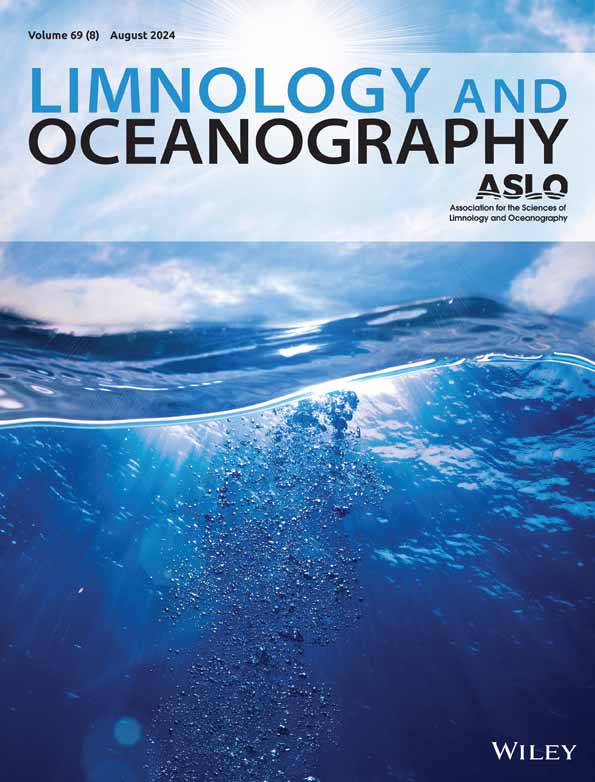Trout have weak effects on zooplankton diversity but strong effects on community biomass
IF 3.8
1区 地球科学
Q1 LIMNOLOGY
引用次数: 0
Abstract
The introduction and extirpation of predators can have large impacts on food web structure and ecosystem function. The magnitude of these predator effects can be influenced by species diversity and turnover along environmental gradients in space or time, which have the potential to buffer or magnify the impact of trophic interactions on ecosystem functioning. In this study, we explored the individual species and community effects of fish predators on lake zooplankton in the Sierra Nevada, CA, USA. Local and beta diversity in zooplankton communities were resilient to fish, only marginally differing among fish and fishless sites, and were more structured along elevational gradients. Observed diversity changes were attributed to species turnover in zooplankton communities, which suggests elevational gradients and fish are acting as ecological filters excluding subsets of species rather than reducing species density. We found that fish significantly reduced densities of larger‐bodied zooplankton species. Further, as larger‐bodied species densities were lower in the presence of fish, we found that the community weighted mean of body mass decreased in the presence of fish in lakes. Although species turnover largely maintained diversity over elevational gradients and in the presence of fish, such changes in larger‐bodied taxa and community biomass may have important implications in the transfer of energy throughout the food web and to connected riparian and aquatic ecosystems that are dependent on the flow of biomass and nutrients.鳟鱼对浮游动物多样性的影响较弱,但对群落生物量的影响较大
捕食者的引入和灭绝会对食物网结构和生态系统功能产生重大影响。这些捕食者效应的大小可能受到物种多样性和在空间或时间上沿环境梯度的更替的影响,它们有可能缓冲或放大营养相互作用对生态系统功能的影响。在本研究中,我们探讨了鱼类捕食者对美国内华达山脉湖泊浮游动物的个体和群落效应。浮游动物群落的本地和β多样性对鱼类具有弹性,在有鱼和无鱼的地点之间仅存在微小差异,并且在海拔梯度上更为结构化。观察到的多样性变化归因于浮游动物群落的物种更替,这表明海拔梯度和鱼类是排除物种亚群的生态过滤器,而不是降低物种密度。我们发现鱼类显著降低了体型较大的浮游动物物种的密度。此外,由于鱼类存在时体型较大的物种密度较低,我们发现湖泊中有鱼类存在时群落加权平均体重下降。尽管物种更替在很大程度上维持了海拔梯度和鱼类存在下的多样性,但大型体分类群和群落生物量的这种变化可能对整个食物网的能量转移以及依赖于生物量和营养物质流动的相连的河岸和水生生态系统具有重要意义。
本文章由计算机程序翻译,如有差异,请以英文原文为准。
求助全文
约1分钟内获得全文
求助全文
来源期刊

Limnology and Oceanography
地学-海洋学
CiteScore
8.80
自引率
6.70%
发文量
254
审稿时长
3 months
期刊介绍:
Limnology and Oceanography (L&O; print ISSN 0024-3590, online ISSN 1939-5590) publishes original articles, including scholarly reviews, about all aspects of limnology and oceanography. The journal''s unifying theme is the understanding of aquatic systems. Submissions are judged on the originality of their data, interpretations, and ideas, and on the degree to which they can be generalized beyond the particular aquatic system examined. Laboratory and modeling studies must demonstrate relevance to field environments; typically this means that they are bolstered by substantial "real-world" data. Few purely theoretical or purely empirical papers are accepted for review.
 求助内容:
求助内容: 应助结果提醒方式:
应助结果提醒方式:


